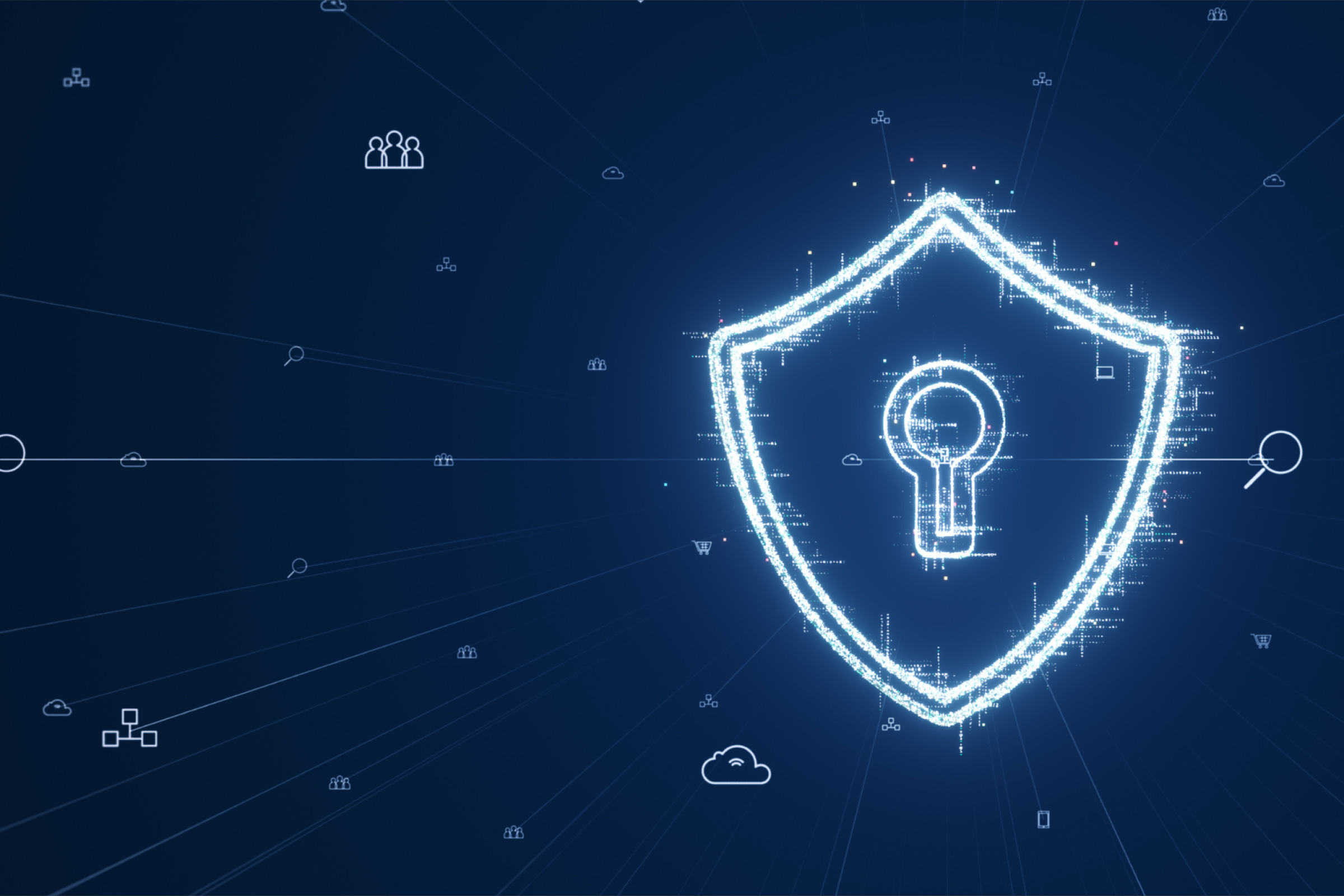What Is Data Leak Prevention?
Data leak prevention (DLP) refers to practices and technologies to prevent sensitive information from leaving a secure environment, whether intentionally or accidentally. DLP aims to identify, monitor, and protect data in use (endpoint actions), in motion (network traffic), and at rest (storage and databases). This protection extends to information classified as confidential, proprietary, or governed by regulations, helping reduce the likelihood of unauthorized disclosure or exposure.
Organizations deploy DLP solutions to control how data is accessed and shared, setting up policies and automated responses for compliance and security. These systems can block, quarantine, or alert when sensitive information is detected moving outside predefined rules. A DLP strategy safeguards intellectual property, personal information, and trade secrets, forming a critical part of a modern information security program.
This is part of a series of articles about exposure management.
Why Data Leaks Happen
Human Error and Insider Risks
Human error remains a predominant cause of data leaks, with employees often unintentionally exposing sensitive information. Common mistakes include sending confidential data to the wrong recipient, mishandling documents, or using insecure communication channels. Such oversights occur in fast-paced, high-pressure environments where information sharing is frequent, making internal education and workflows essential to reduce these risks.
Insider risks also encompass cases where employees intentionally leak data for personal gain or out of malice, exploiting legitimate access to bypass technical controls. Malicious insiders may copy data to external drives, share it with competitors, or leak it online. Organizations must implement internal controls, auditing, and monitoring coupled with a culture that encourages responsible behavior and provides clear consequences for violations.
External Cyberattacks and Malware
External cyberattacks are a significant contributor to data leaks. Threat actors frequently deploy malware, phishing campaigns, and zero-day exploits to gain unauthorized access to systems and extract sensitive information. These attacks can bypass perimeter defenses if organizations fail to patch vulnerabilities or train employees to recognize social engineering attempts.
Once malware infects a system, it can silently capture keystrokes, search for valuable files, and transfer data to remote attackers. Ransomware variants may threaten to leak stolen information publicly unless a ransom is paid. Intrusion detection, endpoint protection, and regular threat intelligence updates are necessary to defend against the evolving techniques used by cybercriminals.
Misconfigured Systems and Cloud Exposures
Misconfigurations in software, network devices, and cloud services can lead to accidental data exposure on a massive scale. Examples include public-facing storage buckets without authentication, weak or default passwords, and excessive permissions granted to users or applications. Cloud environments introduce new complexities, as organizations must manage access and configuration for a wide range of resources across multiple platforms.
Attackers and automated bots actively scan for misconfigurations, leveraging tools to discover exposed databases, file shares, and internal dashboards. Even minor mistakes, such as leaving an administrative interface open, can have severe consequences when they store or process regulated information. Automated configuration management, rigorous access controls, and regular audits are critical steps to minimize these inadvertent leaks.
Third-Party and Supply Chain Vulnerabilities
Third-party vendors and supply chain partners often require access to sensitive information, increasing the attack surface and introducing new risk factors. If a partner organization lacks strong security controls, attackers may target them as a backdoor to access their clients’ data. Risks can arise from shared credentials, unvetted integrations, or the use of outdated software within the supply chain.
High-profile breaches frequently highlight how attackers exploit weak links in the supply chain to compromise otherwise secure organizations. Proper due diligence, regular security assessments, and contractual requirements for security standards are essential when working with third parties. Ongoing monitoring of suppliers’ security hygiene and rapid response procedures can help mitigate the risks posed by indirect exposures and interconnected business relationships.
Data Leaks vs. Data Loss vs. Data Breach
Data leaks, data loss, and data breaches are related but distinct security incidents, each with different implications for organizations:
- A data leak involves the accidental or unauthorized exposure of sensitive information, such as making confidential files publicly accessible on the internet, without necessarily involving external attackers.
- Data loss refers to the unintentional destruction, deletion, or corruption of data, often resulting from system failures, outages, or accidental erasure.
- A data breach typically involves deliberate, unauthorized access by attackers resulting in the theft or compromise of confidential data.
While data loss may disrupt business operations or regulatory compliance, breaches and leaks can trigger reputational damage and legal consequences.
How DLP Works
Here are the key elements of DLP platforms and solutions.
1. Content Inspection
Content inspection is the foundational layer of most DLP systems. It involves scanning files, emails, network traffic, and endpoints for predefined patterns such as credit card numbers, social security numbers, or proprietary keywords. By analyzing the actual content within documents and communications, DLP solutions can enforce policies that block, quarantine, or encrypt transmissions containing sensitive data.
Content inspection can operate in real time or during scheduled scans, and often leverages algorithms to identify information subject to regulatory controls. This approach ensures that even when data is transferred over encrypted channels or stored in non-standard formats, unauthorized handling can be detected and prevented. Customizable detection patterns are key for organizations to adapt DLP content inspection to their unique data protection needs.
2. Contextual Information
DLP systems increasingly rely on contextual information, not just the content itself, to determine whether data movement represents a legitimate action or a risk. Contextual analysis takes into account who is accessing the data, from which device, and under what circumstances, as well as the sensitivity level of the data involved. By evaluating the environment and intent, DLP tools can reduce false positives and apply nuanced controls.
This approach enables more granular enforcement, permitting access to sensitive files internally but blocking uploads to untrusted cloud services or personal email accounts. Contextual analysis also helps organizations map workflows and user behaviors, providing better insight into how critical data is used, stored, and transferred. Adaptive DLP controls based on context provide flexibility without undermining security requirements.
3. Behavioral Analysis
Behavioral analysis in DLP focuses on tracking user actions and identifying deviations from established norms. By creating baseline profiles for typical data access and usage patterns, DLP solutions can flag anomalous activities, such as large transfers, repeated access to confidential files, or off-hours data movements. This helps detect insider threats, compromised credentials, or misuse of legitimate access rights.
Over time, behavioral analytics can help organizations uncover subtle indicators of risk that static content or context-based rules might miss. Machine learning algorithms are often employed to update behavioral models and distinguish between innocuous anomalies and genuine incidents. Integrating behavioral analysis into DLP enhances an organization’s ability to detect complex threats in dynamic environments.
Tips from the Expert

Rob Gurzeev, CEO and Co-Founder of CyCognito, has led the development of offensive security solutions for both the private sector and intelligence agencies.
In my experience, here are tips that can help you better prevent and detect data leaks:
- Leverage deception technologies to detect silent exfiltration attempts: Deploy decoy documents and honeytokens containing fake sensitive data across endpoints and cloud storage. If these are accessed or moved, it signals potential malicious behavior and gives early warning of insider threats or stealthy attacks.
- Profile high-risk data access patterns using identity graphing: Build dynamic identity graphs to understand relationships between users, roles, and access patterns. Outlier detection based on these graphs can expose privilege creep or unusual peer group behaviors that static DLP rules may miss.
- Enforce browser isolation for high-risk users or departments: Use remote browser isolation (RBI) to limit data exposure through web applications for roles with elevated access, such as finance or R&D. RBI prevents data leakage via browser plugins, malicious scripts, or unauthorized copy/paste actions.
- Analyze data lineage to trace exposure risk across business processes: Understanding how sensitive data flows between departments and systems over time (data lineage) can reveal unintentional exposures, insecure transfers, or legacy storage that’s overlooked by traditional DLP tools.
- Establish DLP kill chains for structured response to suspected leaks: Build a “DLP kill chain” model to structure how different types of data leakage unfold—from initial access to exfiltration. Mapping this helps teams detect precursors to leakage earlier and tailor prevention strategies based on attack stage.
Key DLP Components and Technologies
Data Loss Prevention (DLP) Software
DLP software platforms are the primary tools organizations use to enforce data protection policies. These tools monitor data across endpoints, networks, and cloud environments, leveraging content inspection, contextual analysis, and policy enforcement to prevent the unauthorized movement of sensitive information. Modern DLP solutions integrate with multiple systems to provide visibility and protection across diverse infrastructure.
Beyond monitoring and blocking risky behaviors, DLP software maintains detailed logs and generates alerts for compliance reporting and incident management. Integration with security information and event management (SIEM) systems aids in correlating DLP events with broader organizational threats. Choosing a DLP solution requires evaluating its coverage, scalability, and compatibility with existing technology stacks.
Cloud Access Security Broker (CASB)
Cloud access security brokers (CASBs) serve as control points between users and cloud service providers, enforcing security policies for data stored and processed off-premises. CASBs provide visibility into cloud application usage, detect risky behaviors, and enforce granular access restrictions in real time. They also assist in encrypting, tokenizing, or redacting sensitive data before it is transmitted to external cloud environments.
Organizations rely on CASBs to address the unique risks posed by SaaS, IaaS, and PaaS offerings, including shadow IT usage and unapproved data transfers. By integrating with DLP policies, CASBs extend data protection controls into external infrastructure, helping organizations maintain compliance and prevent exposures as they continue to adopt cloud-first strategies.
Insider Risk Management (IRM) Software
Insider risk management (IRM) software focuses on detecting and mitigating threats originating from within the organization, whether accidental or intentional. IRM platforms monitor user activity across endpoints, applications, and networks, identifying suspicious behaviors that may indicate data exfiltration or misuse. By correlating user context, access levels, and actions, IRM systems provide a targeted layer of defense.
These tools often include workflow automation for investigation, escalation, and remediation, allowing security teams to respond rapidly to insider incidents. Advanced IRM software utilizes machine learning to identify behavioral anomalies and assigns risk scores to users. This helps organizations proactively manage insider threats before they result in full-scale data leaks or breaches.
Automated Discovery and Mapping
Automated discovery and mapping tools identify and classify sensitive data assets across endpoint devices, network shares, databases, and cloud platforms. They continuously scan for regulated or proprietary information and map data flows within and outside the organization. By generating up-to-date inventories of sensitive assets, these tools support effective policy creation and risk management.
In addition to initial discovery, automated mapping helps maintain visibility as data moves and evolves, surfacing new points of exposure or compliance gaps. Integration with DLP and IRM solutions provides a dynamic and accurate foundation for layered data protection strategies. Automated mapping reduces manual processes, strengthens security posture, and enhances regulatory compliance.
Data Encryption
Encryption protects sensitive data by making it unreadable to unauthorized users, both at rest and in transit. Strong encryption algorithms are used to encode information stored on endpoints, servers, or cloud services, as well as during data transfers across public and private networks. Even if attackers gain access to encrypted data, they cannot use it without the corresponding decryption keys.
DLP solutions often integrate encryption capabilities or trigger mandatory encryption for certain file types and data exchanges. Organizations should manage encryption keys securely, implement cryptographic protocols, and periodically update mechanisms to defend against evolving threats. Deploying encryption alongside other DLP technologies ensures comprehensive protection, especially for highly regulated industries.
Network Monitoring
Network monitoring tools analyze data traffic moving in and out of the organization, identifying suspicious behaviors or policy violations in real time. DLP-integrated network monitoring can inspect protocols, application traffic, and data payloads for signs of unauthorized transfers or exfiltration attempts. This layer of visibility is crucial for detecting stealthy or automated leaks that may not involve direct user actions.
Effective network monitoring solutions integrate with SIEM platforms and facilitate automated response actions, such as blocking risky traffic or alerting security teams to incidents. Advanced systems use deep packet inspection and behavioral analysis to keep pace with evolving attack techniques. Persistent monitoring of network flows is a critical component of holistic DLP defense.
Best Practices for Data Leak Prevention
1. Identify and Classify sensitive Data
The first step in data leak prevention is accurately identifying and classifying sensitive information across the organization. This involves conducting data inventories to locate regulated, confidential, or proprietary data wherever it may reside, in databases, endpoints, emails, cloud repositories, and third-party platforms. Classification assigns labels based on data type, legal requirements, and business value, informing access controls and protection strategies.
Automated discovery tools can continuously scan for new or modified sensitive data, ensuring inventories remain current even as environments evolve. Clear classification policies help organizations prioritize resources, enforce nuanced controls, and respond effectively to incidents. Regular reviews of data classification ensure that critical information is protected against emerging threats and changing business processes.
2. Secure endpoints and Enforce Least Privilege
Securing endpoint devices, including desktops, laptops, and mobile phones, is essential for preventing data leaks. Organizations should implement endpoint protection platforms, ensure devices are regularly patched, and enable device encryption. Multifactor authentication and endpoint firewall controls further reduce the attack surface, while device management solutions provide visibility and rapid response to security incidents.
Applying the principle of least privilege is equally important. Users should receive only the minimum level of access required for their job functions, and privilege escalation should be tightly controlled and audited. Regular review and adjustment of permissions help limit the potential damage from compromised accounts or insider threats, making unauthorized data access and exfiltration significantly more difficult.
3. Continuously Monitor User Activity and Network Flows
Continuous monitoring of user actions and network flows increases the likelihood of detecting abnormal behavior or policy violations before they result in data leaks. Monitoring solutions should be configured to flag unusual access patterns, bulk data downloads, off-hours activity, and other indicators of compromise. These tools enable rapid investigation and containment of incidents across endpoints, servers, and cloud environments.
Effective monitoring also provides a valuable audit trail for compliance reporting and forensic analysis. Automation can prioritize alerts and correlate disparate data points to reduce alert fatigue and enhance detection accuracy. By establishing a baseline for typical activity, organizations can better distinguish between normal operations and potential threats, continuously strengthening DLP posture.
4. Conduct Regular Security Training and Awareness Programs
Regular security training and awareness initiatives equip employees with the knowledge to recognize and avoid risky behaviors that lead to data leaks. Training topics should cover identifying phishing emails, safe data handling practices, secure use of cloud services, and reporting suspicious incidents. Frequent simulations and actionable guidance help reinforce learning and improve response to real-world scenarios.
Awareness programs should also communicate clear organizational policies about data protection and consequences for violations. Providing ongoing education ensures employees stay current with evolving threats and reinforces a security-first culture. Engaged and informed workforces are consistently one of the most effective defenses against both accidental and intentional data exposures.
5. Evaluate and Monitor Third-Party Vendors
Vendor risk management is an indispensable aspect of DLP in a connected business landscape. Organizations must assess the data security measures of suppliers and service providers, ensuring they meet contractual requirements and industry standards. Initial onboarding should include diligent security reviews and the imposition of specific data handling policies as part of vendor agreements.
Ongoing monitoring of third-party vendors is essential as business relationships, technology stacks, and risks evolve. Regular security assessments and audits, timely sharing of threat intelligence, and reciprocal incident response plans enhance collective resilience. These practices help minimize exposure from external partners and contribute to a holistic strategy for data leak prevention.
Enhancing DLP with CyCognito
While traditional DLP solutions focus on protecting data that resides within known environments, CyCognito extends that protection to assets and exposures outside the organization’s direct visibility. Data leaks frequently originate from shadow IT, forgotten cloud assets, or misconfigured third-party systems that fall beyond the scope of internal controls. This is where CyCognito’s external exposure management capabilities become critical.
CyCognito continuously discovers and maps an organization’s entire external attack surface—including unknown, orphaned, or third-party–connected assets—and automatically classifies them based on business context and risk.
This external visibility complements DLP by identifying where sensitive data could be unintentionally exposed, before any policy-based controls are even applied. And so, byy integrating with existing DLP workflows and security operations, CyCognito enables teams to:
- Detect unknown and unmanaged assets that may store or transmit sensitive information outside approved environments.
- Prioritize remediation by correlating asset exposure with data sensitivity and business importance.
- Validate policy coverage to ensure DLP rules extend to all relevant cloud services, subsidiaries, and third-party systems.
- Reduce alert fatigue through automated context enrichment that highlights only meaningful external risks.
Together, CyCognito and DLP technologies deliver a unified approach to data protection, combining internal control with external visibility.
This integrated strategy not only prevents data from leaving secure boundaries but also ensures that those boundaries are complete, continuously updated, and resilient against evolving exposure risks.














